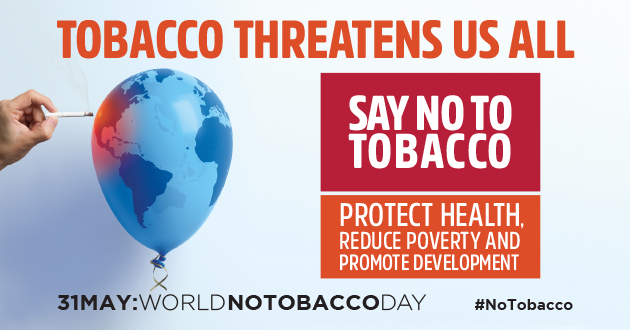GENEVA|HL Action to stamp out tobacco use can help countries prevent millions of people falling ill and dying from tobacco-related disease, combat poverty and, according to a first-ever WHO report, reduce large-scale environmental degradation.
On World No Tobacco Day 2017, WHO is highlighting how tobacco threatens the development of nations worldwide, and is calling on governments to implement strong tobacco control measures. These include banning marketing and advertising of tobacco, promoting plain packaging of tobacco products, raising excise taxes, and making indoor public places and workplaces smoke-free.
Tobacco’s health and economic costs
Tobacco use kills more than 7 million people every year and costs households and governments over US$ 1.4 trillion through healthcare expenditure and lost productivity.
“Tobacco threatens us all,” says WHO Director-General Dr Margaret Chan. “Tobacco exacerbates poverty, reduces economic productivity, contributes to poor household food choices, and pollutes indoor air.”
Dr Chan adds: “But by taking robust tobacco control measures, governments can safeguard their countries’ futures by protecting tobacco users and non-users from these deadly products, generating revenues to fund health and other social services, and saving their environments from the ravages tobacco causes.”
All countries have committed to the 2030 Agenda for Sustainable Development, which aims to strengthen universal peace and eradicate poverty. Key elements of this agenda include implementing the WHO Framework Convention on Tobacco Control, and by 2030 reducing by one third premature death from noncommunicable diseases (NCDs), including heart and lung diseases, cancer, and diabetes, for which tobacco use is a key risk factor.










